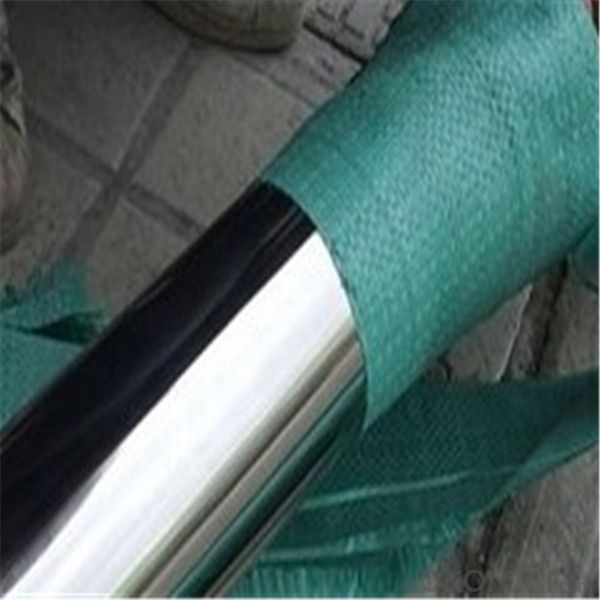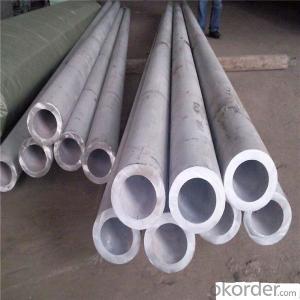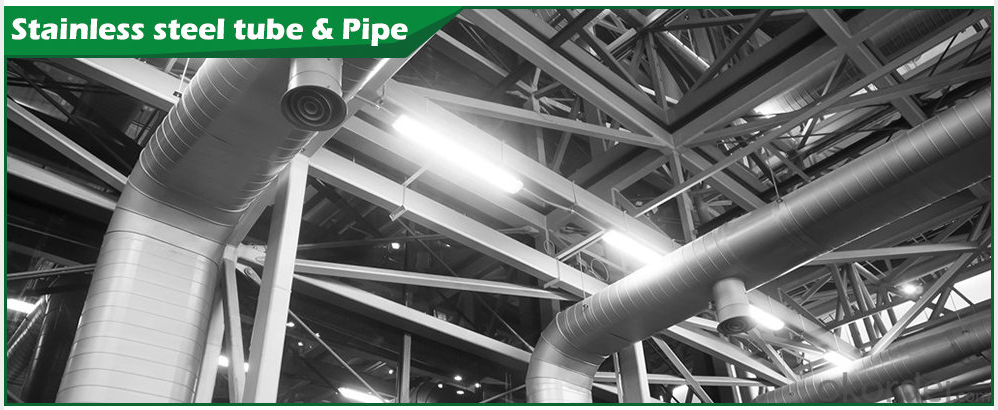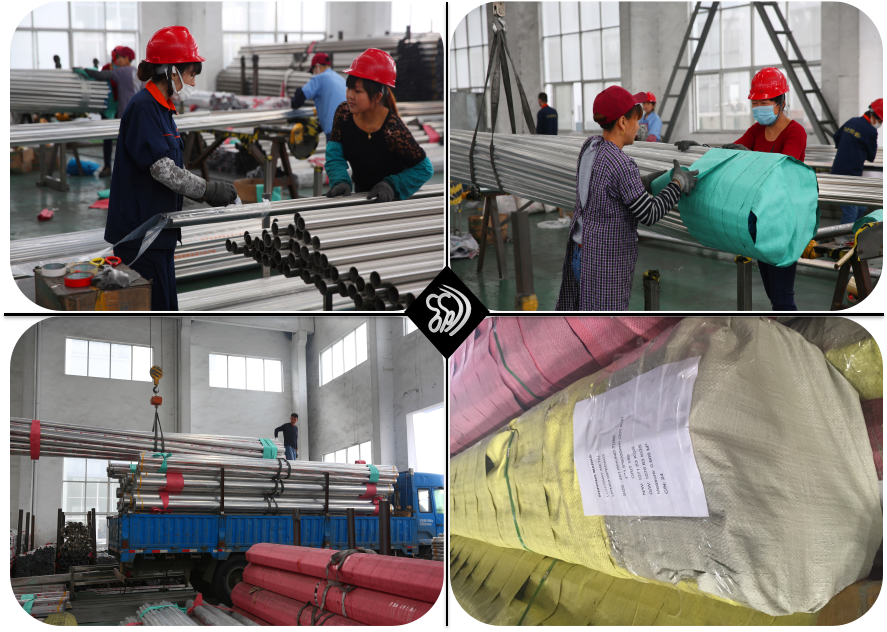304 Stainless Steel Seamless Pipe in Wuxi ,China
- Loading Port:
- Shanghai
- Payment Terms:
- TT OR LC
- Min Order Qty:
- 6 m.t.
- Supply Capability:
- 25000 m.t./month
OKorder Service Pledge
OKorder Financial Service
You Might Also Like
Item specifice
316 stainless steel pipe
Product Description
Name | Stainless Steel Seamless & Welded Tube &Pipe | |||||
Items | Square tubes, round tubes, oval pipes, special shaped pipes, empaistic pipes, fittings | |||||
Standard | ASTM A554, A249, A269 and A270 | |||||
Material Grade | 201: Ni 0.8%~1% | |||||
202: Ni 3.5%~4.5% | ||||||
304: Ni 8%, Cr 18% | ||||||
316: Ni 10%, Cr 18% | ||||||
316L: Ni10%~14% | ||||||
430: Cr16%~18% | ||||||
Outer Diameter | 9.53mm--159mm | |||||
Thickness | 0.3mm - 3.0mm | |||||
Length | 6m or as customers' request | |||||
Tolerance | a) Outer Diameter: +/- 0.2mm | |||||
b) Thickness: +/- 0.02mm | ||||||
c) Length: +/- 5mm | ||||||
Surface | 180G, 240G, 320G Satin / Hairline 400G, 600G Mirror finish | |||||
Application | handrail,railing, staircase, weldmesh screen,door,window, balcony,fence,bench,furniture,etc | |||||
Test | Squash test, extended test, water pressure test, crystal rot test, heat treatment, NDT | |||||
Chemical Composition of Material | Material
Composition | 201 | 202 | 304 | 316L | 430 |
C | ≤0.15 | ≤0.15 | ≤0.08 | ≤0.035 | ≤0.12 | |
Si | ≤1.00 | ≤1.00 | ≤1.00 | ≤1.00 | ≤1.00 | |
Mn | 5.5-7.5 | 7.5-10 | ≤2.00 | ≤2.00 | ≤1.00 | |
P | ≤0.06 | ≤0.06 | ≤0.045 | ≤0.045 | ≤0.040 | |
S | ≤0.03 | ≤0.03 | ≤0.030 | ≤0.030 | ≤0.030 | |
Cr | 13-15 | 14-17 | 18-20 | 16-18 | 16-18 | |
Ni | 0.7-1.1 | 3.5-4.5 | 8-10.5 | 10-14 | ||
Mo | 2.0-3.0 | |||||
Mechanical Property | Material Item | 201 | 202 | 304 | 316 | |
Tensile Strength | ≥535 | ≥520 | ≥520 | ≥520 | ||
Yield Strength | ≥245 | ≥205 | ≥205 | ≥205 | ||
Extension | ≥30% | ≥30% | ≥35% | ≥35% | ||
Hardness (HV) | <105< span=""> | <100< span=""> | <90< span=""> | <90< span=""> | ||
Mechanical Properties: MaterialY.S(N/MM2)T.S(N/MM2)ElongationHRB304>205>520>40<95304L>175>480>40<90316>205>520>40<90316L>175>480>40<90430>205>450>22<89
Applications: SurfaceApplication2BMedical equipment, Food industry, Construction material, Kitchen utensils.BAKitchen utensils, Electric equipment, Building construction.No.1Chemical tank, pipe.No.4Kitchen utensils, Building construction,Medical equipment.HLBuilding Construction.
|
| ---Packing & Transport--- Packing
Transport
|


- Q:Are stainless steel pipes suitable for hydraulic applications?
- Stainless steel pipes are indeed suitable for hydraulic applications. Renowned for their outstanding resistance to corrosion, stainless steel proves ideal for hydraulic systems that may encounter different fluids. With their impressive strength and durability, stainless steel pipes can withstand the high pressure and temperature conditions commonly found in hydraulic systems. Moreover, these pipes offer exceptional dimensional stability, maintaining their shape and integrity even during extreme operating conditions. Thanks to their corrosion resistance, stainless steel pipes boast a longer service life compared to alternative materials, reducing the necessity for frequent replacements and maintenance. All in all, stainless steel pipes represent a trustworthy and effective option for hydraulic applications.
- Q:Are stainless steel pipes resistant to chloride stress corrosion cracking?
- Generally, stainless steel pipes resist chloride stress corrosion cracking. Stainless steel is well-known for its ability to resist corrosion, even in chloride environments. The presence of chromium in stainless steel creates a protective layer on the surface that shields it from corrosion. This layer stops chloride ions from penetrating and reduces the risk of stress corrosion cracking. However, the resistance to chloride stress corrosion cracking can vary depending on the particular grade of stainless steel and the surrounding conditions. Therefore, it is crucial to select the appropriate stainless steel grade that offers sufficient resistance to chloride stress corrosion cracking for specific applications, particularly in high chloride environments like coastal areas or industrial settings.
- Q:Can stainless steel pipes be used for brewery and beverage industry applications?
- Yes, stainless steel pipes can be used for brewery and beverage industry applications. Stainless steel is highly resistant to corrosion, making it suitable for handling liquids and beverages. It is also easy to clean and maintain, ensuring the hygienic requirements of the industry are met. Stainless steel pipes are commonly used in these industries due to their durability, longevity, and compatibility with various fluids.
- Q:Can stainless steel pipes be used for architectural purposes?
- Stainless steel pipes are indeed capable of being utilized for architectural purposes. The architectural applications of stainless steel are facilitated by several properties it possesses. Firstly, its resistance to corrosion is incredibly high, a crucial factor for structures that are exposed to the elements. Moreover, the sleek and modern appearance of stainless steel pipes can impart an aesthetic touch to architectural designs. In addition to this, stainless steel is a formidable and long-lasting material that provides structural integrity and longevity to buildings. Its versatility allows it to be incorporated into a variety of architectural elements, including handrails, balustrades, staircases, and structural supports. All in all, due to their combination of corrosion resistance, aesthetic appeal, and strength, stainless steel pipes are a widely favored choice for architectural purposes.
- Q:What are the different types of stainless steel pipe unions?
- Different types of stainless steel pipe unions are available for specific applications and requirements. Some common types are: 1. Threaded Union: This union has threading on both ends, making installation and disassembly easy. It is suitable for low-pressure applications and can handle moderate temperatures. 2. Socket Weld Union: Socket weld unions have a socket on one end and a male threaded connection on the other. They are designed for high-pressure applications and commonly used in industrial settings. 3. Butt Weld Union: Butt weld unions have two butt weld connections on each end. They are used in applications requiring a permanent, leak-proof connection, such as pipelines carrying corrosive fluids. 4. Flanged Union: Flanged unions have flanges on both ends, enabling easy connection to flanged pipes or equipment. They are commonly used in high-pressure and high-temperature applications that require straightforward installation and disassembly. 5. Compression Union: Compression unions consist of two ferrules and a nut that compresses the ferrules onto the pipe, creating a tight seal. They are commonly used in plumbing and gas supply systems. 6. Quick Connect Union: Quick connect unions, also known as push-to-connect unions, allow for easy and fast assembly without the need for tools or soldering. They are commonly used in plumbing, irrigation, and air compressor systems. Choosing the appropriate stainless steel pipe union is crucial, considering factors such as pressure, temperature, and compatibility with the transported fluid. Seeking guidance from a knowledgeable supplier or engineer can ensure the selection of the correct union for the intended application.
- Q:Can stainless steel pipes be used for desalination systems?
- Indeed, desalination systems can utilize stainless steel pipes. This material, known for its resistance against corrosion, can withstand the demanding conditions present in desalination processes, wherein salt and other impurities are extracted from seawater. The exceptional corrosion resistance of stainless steel renders it a prime selection for conveying the treated water, as it aids in preserving the water's purity and preventing any contamination. Furthermore, stainless steel pipes possess commendable mechanical attributes, such as strength and durability, which are indispensable for the effective operation of desalination systems.
- Q:Can stainless steel pipes be insulated with mineral wool?
- Yes, stainless steel pipes can indeed be insulated with mineral wool. Mineral wool is a common and effective insulation material used in various industries, including plumbing and construction. It is capable of withstanding high temperatures and offers excellent thermal and acoustic insulation properties. Additionally, mineral wool is non-combustible and resistant to moisture, making it suitable for insulating stainless steel pipes that carry hot or cold fluids. The insulation can help prevent heat loss, reduce energy consumption, and protect against condensation and pipe sweating.
- Q:What is the difference between Type 304H and Type 316H stainless steel pipes?
- Both Type 304H and Type 316H stainless steel pipes are high carbon versions of their respective stainless steel grades, but they have some distinct differences. To begin with, Type 304H stainless steel pipe is classified as an austenitic stainless steel with 18-20% chromium and 8-10.5% nickel. It boasts a maximum carbon content of 0.04-0.10%, which contributes to its improved strength at high temperatures and resistance against sensitization. Sensitization occurs when stainless steel is exposed to elevated temperatures, leading to corrosion along the grain boundaries. Consequently, Type 304H is a suitable choice for applications in the chemical processing industry that involve high temperatures. On the contrary, Type 316H stainless steel pipe is also an austenitic stainless steel but contains higher concentrations of chromium (16-18%), nickel (10-14%), and molybdenum (2-3%). The inclusion of molybdenum significantly enhances the corrosion resistance of Type 316H, particularly in chloride-rich environments. Thus, Type 316H is well-suited for applications that demand exceptional resistance to corrosion, such as marine environments or exposure to acidic or alkaline solutions. To summarize, the primary distinction between Type 304H and Type 316H stainless steel pipes lies in their chemical compositions and the resulting properties. Type 304H offers improved strength at high temperatures and resistance against sensitization, whereas Type 316H provides superior corrosion resistance, particularly in chloride-rich environments. The selection between the two depends on specific application requirements, including temperature, corrosion resistance, and environmental conditions.
- Q:How do stainless steel pipes compare to concrete pipes?
- The advantages and disadvantages of stainless steel pipes and concrete pipes differ, and their suitability for specific applications may vary. Stainless steel pipes possess durability, corrosion resistance, and a high strength-to-weight ratio. They can withstand extreme temperatures, making them ideal for applications that involve high-pressure fluids or gases, such as in the oil and gas industry. Additionally, stainless steel pipes are commonly utilized in food processing, chemical plants, and wastewater treatment facilities due to their hygienic properties and chemical resistance. Moreover, they have a smooth interior surface, reducing friction and enabling efficient fluid flow. On the other hand, concrete pipes are recognized for their strength, longevity, and resistance to external loads. They are frequently employed in sewer systems, stormwater drainage, and culverts due to their ability to withstand heavy traffic loads and high groundwater pressures. Furthermore, concrete pipes are fire-resistant and provide excellent insulation, making them suitable for applications requiring fire protection. In terms of cost, stainless steel pipes generally have a higher price than concrete pipes. However, stainless steel pipes necessitate minimal maintenance and have a longer lifespan, which can compensate for the initial cost. Conversely, concrete pipes, though cheaper, may require more frequent repairs and have a shorter lifespan. Ultimately, the selection between stainless steel pipes and concrete pipes depends on the specific project requirements, including the intended application, environmental conditions, budget, and anticipated lifespan. Seeking advice from a professional engineer or pipe materials specialist can ensure the appropriate choice of pipe material for a given project.
- Q:What is the difference between 17-4 and 15-5 stainless steel pipes?
- The main difference between 17-4 and 15-5 stainless steel pipes lies in their composition and properties. 17-4 stainless steel is a precipitation-hardening alloy that contains around 17% chromium and 4% nickel. It also includes significant amounts of copper, niobium, and tantalum, which contribute to its high strength and corrosion resistance. 17-4 stainless steel pipes are known for their excellent mechanical properties, making them ideal for applications that require high strength and toughness. They are commonly used in industries such as aerospace, defense, and oil and gas. On the other hand, 15-5 stainless steel is also a precipitation-hardening alloy, but it contains around 15% chromium and 5% nickel. It has a higher copper content compared to 17-4 stainless steel. The addition of copper in 15-5 stainless steel enhances its resistance to corrosion and improves its toughness. These pipes are often used in applications where a combination of strength, corrosion resistance, and good formability is required. They find applications in industries such as marine, chemical processing, and food processing. In summary, while both 17-4 and 15-5 stainless steel pipes are precipitation-hardening alloys, the difference lies in their chromium, nickel, and copper content. 17-4 stainless steel offers higher strength and toughness, making it suitable for demanding applications. 15-5 stainless steel, with its increased copper content, provides enhanced corrosion resistance and formability, making it a preferred choice for certain industries.
1. Manufacturer Overview |
|
|---|---|
| Location | |
| Year Established | |
| Annual Output Value | |
| Main Markets | |
| Company Certifications | |
2. Manufacturer Certificates |
|
|---|---|
| a) Certification Name | |
| Range | |
| Reference | |
| Validity Period | |
3. Manufacturer Capability |
|
|---|---|
| a)Trade Capacity | |
| Nearest Port | |
| Export Percentage | |
| No.of Employees in Trade Department | |
| Language Spoken: | |
| b)Factory Information | |
| Factory Size: | |
| No. of Production Lines | |
| Contract Manufacturing | |
| Product Price Range | |
Send your message to us
304 Stainless Steel Seamless Pipe in Wuxi ,China
- Loading Port:
- Shanghai
- Payment Terms:
- TT OR LC
- Min Order Qty:
- 6 m.t.
- Supply Capability:
- 25000 m.t./month
OKorder Service Pledge
OKorder Financial Service
Similar products
New products
Hot products
Hot Searches
Related keywords






























